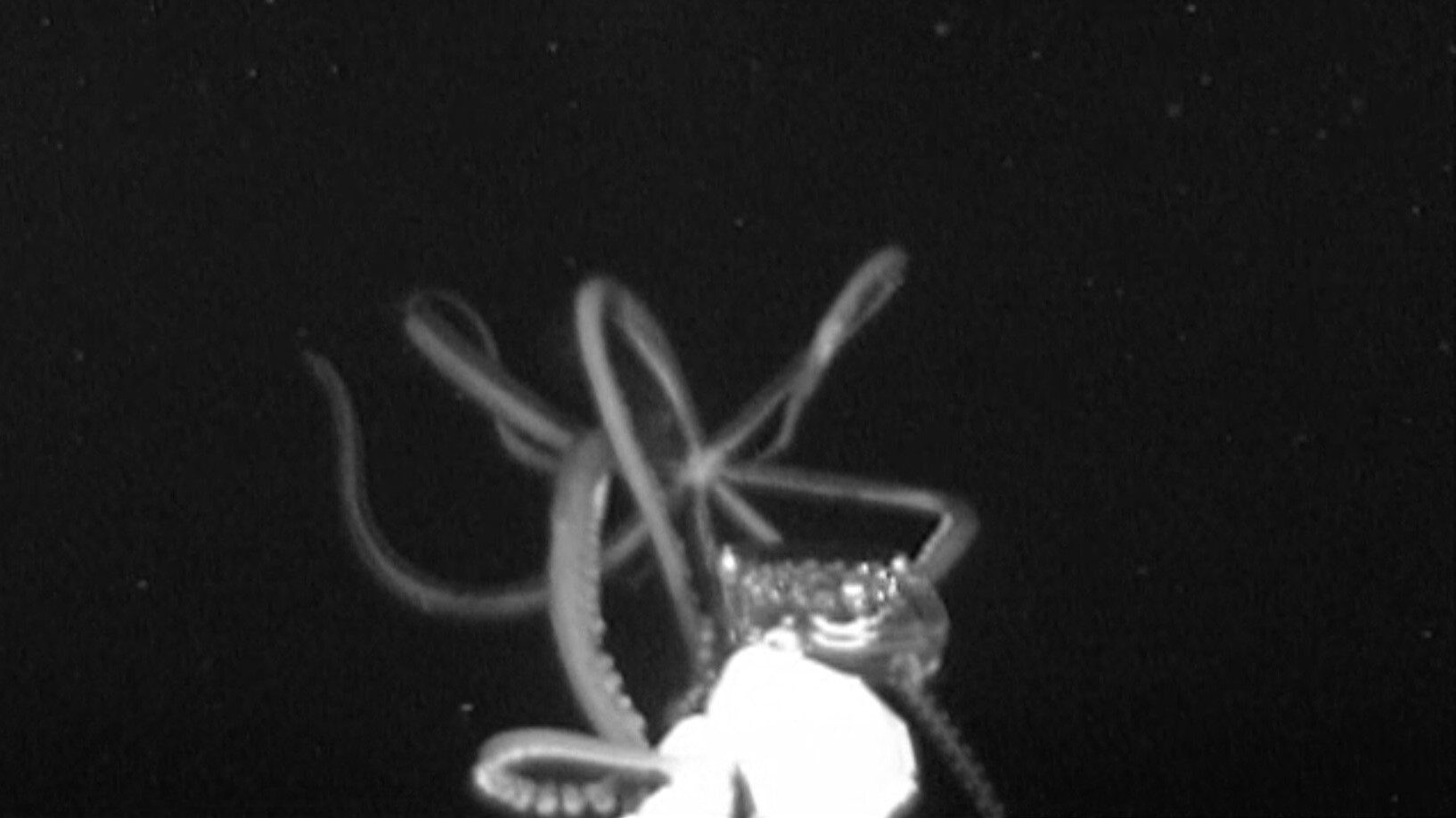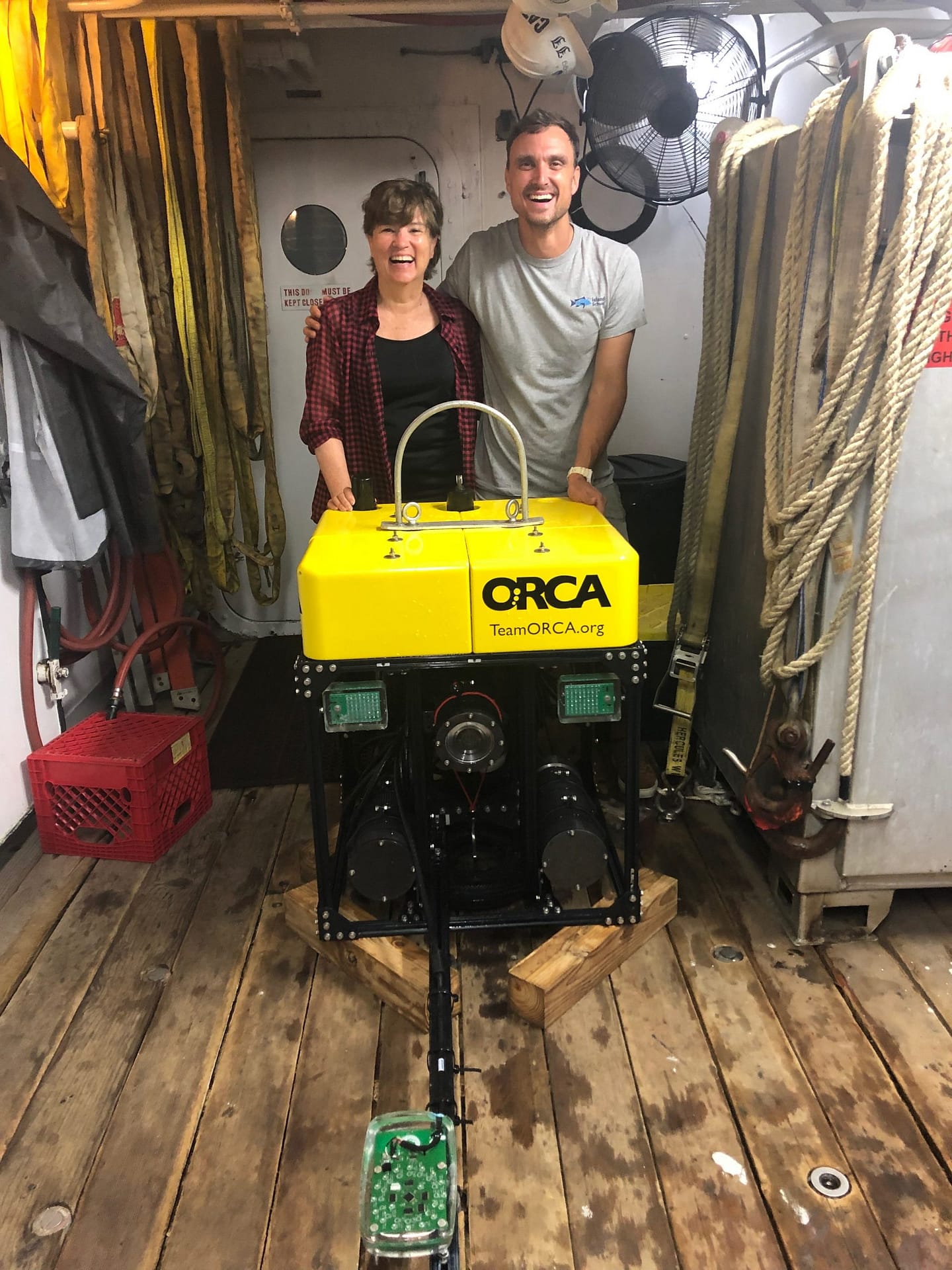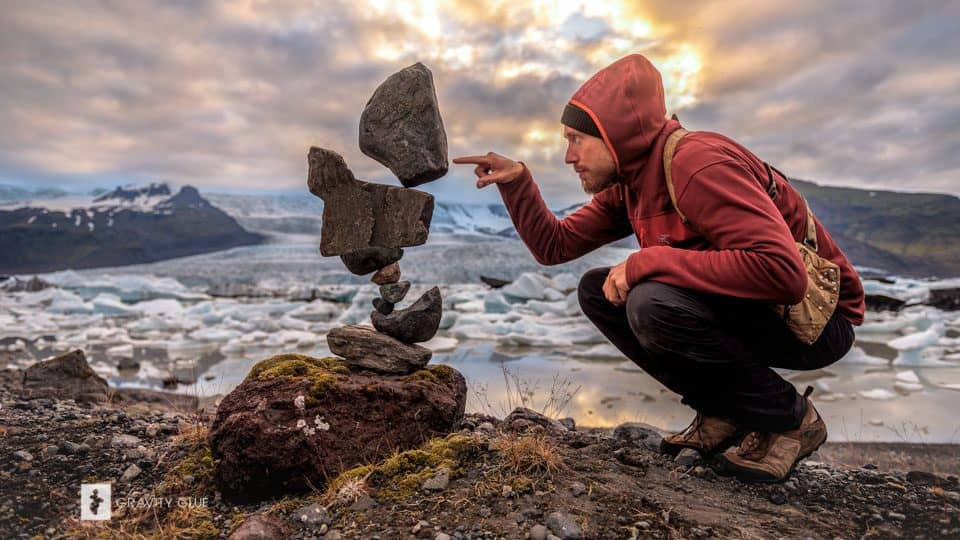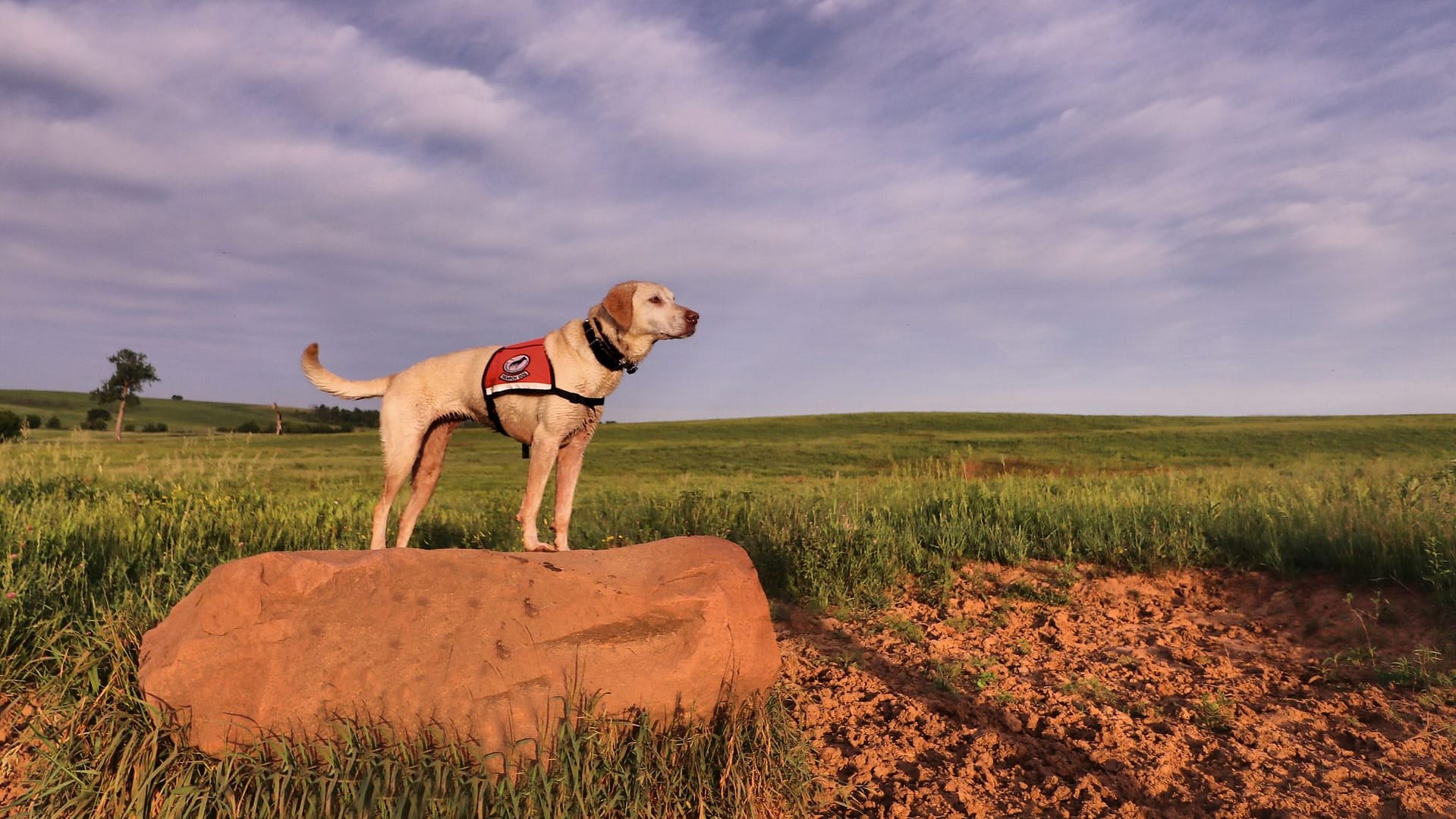Below the surface of the sea swims a creature with eyes as big as dinner plates and a body nearly 60 feet long. Though they’re some of the largest animals on the planet and legends of their tentacles have circulated for millennia, no one had ever really seen the giant squid in action. That is, until these scientists deployed their ingenious technology into the deep!
For decades, giant squids have thwarted scientists’ attempts to find them, only revealing their presence in the form of their beaks in the stomachs of sperm whales and their dead who’ve washed up on the beach. But now, scientists have cracked the code on seeing what’s really happening in the oceans deep!
When Dr. Nathan J. Robinson (who you’ll recognize from this sea turtle camera article) told me that his team had just recorded the second of the two videos to exist of these supposed legends au naturale, I was swarmed with questions. What does this mean? Why have they been so hard to find alive before? What makes this team of scientists so special that they saw the creature twice?! And in all bluntness, of course, I wondered: Why should we all care?
His answers to these questions will remind you how mysterious and wonderful the world around you is, and maybe even have you jumping in your own boat to see what legends you can uncover!

What happens when legends come true right before your eyes?
For Dr. Nathan J. Robinson, that happened on a stormy day on the Gulf Coast when, right before lightning struck the boat and a water spout opened up in the near distance, he and his team captured the second video of the Kraken to ever exist!
As with most myths, that of the Kraken holds a seed of truth. There are giant cephalopods in our oceans, right off of the coasts where we dip our toes—but they’ve only left us breadcrumbs of their existence.
The creature you’re about to meet is pretty similar to the squids you’ve seen before, with long tentacles, three hearts, a beak for a mouth, and the ability to squirt ink. But they have a few glaring differences, the first being that these babies are huge. Just their mantles (the part of them that isn’t tentacles) can reach lengths of 7 feet! 1 (If you think that’s big, check out their Antarctic cousin, the Colossal Squid.)
With eyes the size of frisbees—the biggest eyes in the animal kingdom—and sharp teeth around their suckers, it’s understandable why so many legends have formed around giant squid: imagine seeing one of these creatures and trying to tell your friends about it?!
But why has it been so difficult for scientists to find and study giant squid doing giant squid things? How have they stayed hidden for so long, when their legend has even made it onto bottles of rum? And why is this research so important for us all to take part in?
I sat down with him to discuss all of this in an interview that brings us all into the middle of the ocean, a place less studied than the surface of the moon, to discover a creature that has eluded us since at least the 1100s! 2
We’ll see the squid in action and learn how Nathan and renowned marine biologist, Dr. Edith Widder, are working to bring you into these monumental discoveries, as well! When Nathan lets us in on what these findings mean for all of us, I truly wasn’t expecting his uplifting response.
Here’s a bit of our chat:
Following the Wonder!
There’s so much out there to explore! So, if you’d like to support future expeditions to Capture the Kraken with Edie and Nathan, head over to their GoFundMe! They’re all set up to keep exploring with their modern version of their camera technology, ANGLER—they just need you and your friends to lend a hand, or tentacle, if you will, by spreading the word!
As you heard Nathan say in the video, this technology will eventually be available to purchase. If you know someone who loves taking their boat out to sea, pass this article along to them! Who knows, they could be the ones collecting the information that will help scientists keep uncovering and celebrating the world of wonder that exists in the deep. (And learn how we can keep the biggest carbon storage area, or carbon sink, on the planet active and flourishing!)
Follow Nathan over on Instagram to stay in touch!
If you’d like to hear from Dr. Edie Widder about how she captured the first-ever video of a giant squid in action in 2012 (and see the phenomenal footage yourself), then you’re definitely going to want to watch this TED Talk next!
She goes into fascinating depths about the techniques she used to lure them in and makes the case as to why exploring, without using obtrusive methods (like bright lights, for example), can help us meet the world’s most elusive creatures and make discoveries that can help us form a clearer picture of our wonderful world.

Courtesy of Nathan J. Robinson
More than 80% of our oceans have yet to be explored 4—who else has been out there this entire time, eluding us? What stories have yet to be told?
By using a lure instead of a device that zooms through the water, making unappealing noise and emitting bright lights, Widder, Robinson, and their team were able to observe all kinds of creatures with all of their natural curiosities, on their terms, for the first time!
(If you were a big-eyed, shy little introvert—or a shrimp who pukes when it’s scared—why would you approach a blindingly bright machine you’ve never seen before?)
With this “stealth” lure, scientists were not only able to get a glimpse at the giant squid’s personality, but they also captured the first-ever, in-action, all-natural response of a deep-sea shrimp spewing their bioluminescent cloud! This is something that has only been seen before in labs by poking at the shrimp. Here’s a great article about this discovery over on Mashable.
We’re able to see the real stories unfolding in the ocean’s deep because of innovations like this!
“The more you learn about things, the more beautiful they become.”
Nathan J. Robinson
Whenever we discover something new about how the world really works, from how giant squid live their lives right beside us to the world right outside our backdoors, we might be surprised by how much joy we can spark for ourselves every single day. Knowing how trees talk to each other or how your dog can see through time can make the same walk around the block so much more exciting!
This search for giant squids isn’t just happening because of conservation efforts. First and foremost, it’s ignited by the scientist’s awe and the joy of discovery. And the beauty is, every single one of us can access these feelings—they’re totally free. What would happen if we were all following what brought us awe?
It’s an amazing world out there, and one thing is for certain: it has endless corners of wonder for us to explore!
While Nathan and Edie are hard at work creating their new camera system, why not start exploring the wonder hidden in your own home? These three articles will have you experiencing your own space in entirely new ways. Just try not to find these objects more wonder-full the next time you encounter them!
From Bunnies to Solar Systems: The Magic of Dust!
What do the dust bunnies under your nightstand have in common with our solar system? Turns out, the answer to that is all about the wonder of connections! Read on and all around you will seem a mystery unfolding.
Read Article Watch Video Listen to PodcastWhy Is My Cat So Dang Weird?!
The midnight racing, the pre-pounce butt-wiggle… these are just a small sampling of the odd things that cats do. But you don’t need to be a crazy cat lady to appreciate these sometimes-ferocious little furballs! Let’s start by nipping at the evolutionary excuses your cat has for being, well, the weirdest!
Read Article Watch Video Listen to PodcastDo You See the Ancient Superhero In This Photo?!
Want to get a dose of wonder 5 or 6 times a day, while doing something you have to do anyway? You have an element in your home right now that is critical to human history and you probably wouldn’t even be here without it!
Read Article Watch Video Listen to PodcastHere’s the GoFundMe link to support bringing the wonder of the deep sea to everyone if you’d like to contribute to helping Edie, Nathan, their team, and yourself continue making these discoveries by furthering their innovation.
As always folks, stay open to new possibilities. There’s so much more to explore and discover right on our planet! The more that we follow our curiosity, the better off we are.
Do you have any favorite legends you’d like to see come to life? How about Bigfoot?
- Sam
“No problem can be solved from the same level of consciousness that created it.” —Albert Einstein

Don’t miss out on a single article!
Enjoy unlimited access to over 500 articles & podcast that give you a positive perspective on the state of the world and show you practical ways you can help.
Notes:
- “Giant Squid.” Smithsonian Ocean, 24 June 2019, ocean.si.edu/ocean-life/invertebrates/giant-squid. Accessed 21 July 2020. ↩
- Rodrigo Brincalepe Salvador. “Kraken: The Real-Life Origins of the Legendary Sea Monster.” The Independent, 4 Jan. 2016, www.independent.co.uk/news/science/kraken-the-real-life-origins-of-the-legendary-sea-monster-a6796241.html. Accessed 21 July 2020. ↩
- Ever Widening Circles. “Giant Squid and Glowing Vomit: New Tech Helps Us See the Wonder of the Deep Ocean!” YouTube, 23 July 2020, https://youtu.be/gUqwbaqEAf4. Accessed 30 July 2020 ↩
- US Department of Commerce, National Oceanic and Atmospheric Administration. “How Much of the Ocean Have We Explored?” Noaa.Gov, 2020, oceanservice.noaa.gov/facts/exploration.html#:~:text=More%20than%20eighty%20percent%20of,the%20mysteries%20of%20the%20deep. Accessed 21 July 2020. ↩








